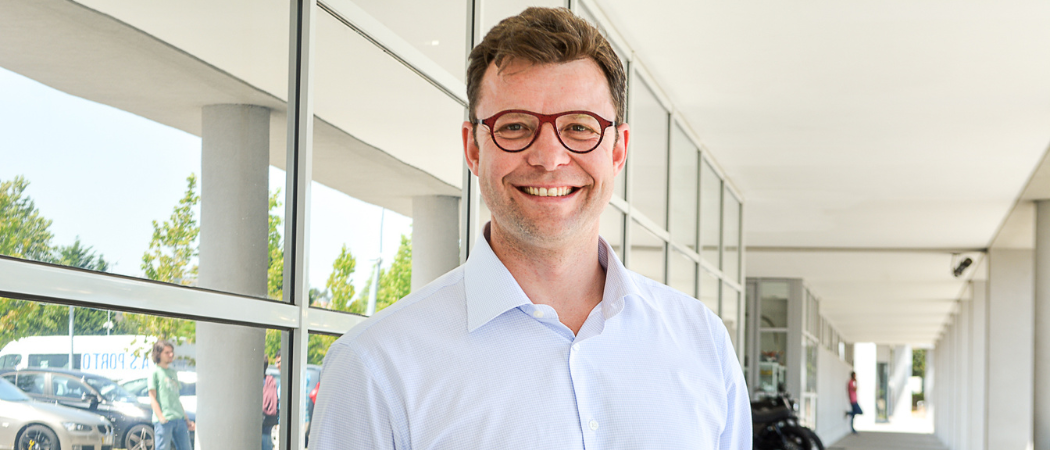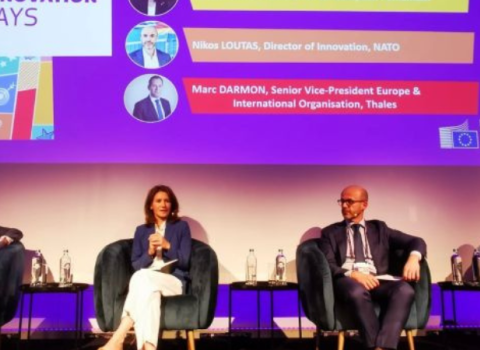In polarised times, it is critical that we take a nuanced approach to designing the next framework programme, FP10

Ricardo Miguéis, head of INESC Brussels HUB.
It’s an increasingly binary world, where two opposites are presented as the only options available - and this lack of nuance is now infecting research and innovation policy.
Take for instance: Research Infrastructures versus Technology Infrastructures; basic research versus applied research; Pillar 1 versus Pillar 2; cohesion versus excellence; the east versus the west, the north versus the south; universities versus research technology organisations; the research office versus the researcher; the researcher versus the entrepreneur; the EU versus the world.
As discussions on the shape of the next EU research programme, FP10, gather pace, this polarisation is of increasing concern. In particular, it must not be allowed to undermine the European Research Council (ERC). I am a staunch supporter of the hugely successful ERC, but find that nowadays 90% of the conversations about its future in FP10 start with some version of an ‘ERC versus the world’ argument.
But the inherent danger of binary thinking in the research and innovation landscape extends far beyond the ERC, manifesting in practical, often detrimental consequences for the advancement of knowledge and technology. This binary framing not only narrows the scope of funding and policy support but also diminishes the capacity of research and innovation to respond to complex global challenges that demand a multifaceted approach.
As one example of this, a researcher faced funding barriers in her interdisciplinary research on the impact of climate change on biodiversity. Another example is an EU project to develop water purification technologies which struggled due to its cross-disciplinary nature. Both examples highlight the need for funding that supports specific skills to transition fundamental knowledge to market readiness.
But all the examples above ignore the most dangerous binary view of all: research and innovation versus the world. This is especially when we are talking about budgetary divisions - and in the end, everything hangs on this. By bickering between ourselves about who should get more from the ever-small pot we will have access to, we are overlooking the main issue, which is properly funding R&I and thus contributing to solving the main societal problems on planet earth (and beyond, it seems).
To overcome this, we need to start thinking objectively. We need to acknowledge that the research and innovation funded by framework programmes is not an end in itself. It is, as it has been since the first EU research programme Esprit (European Strategic Programme for Research and Development in Information Technology) was set up in 1984 about Europe’s competitiveness. As Michel Carpentier, director general of DG XIII and the leading force behind Esprit put it, the aim was, “to coordinate and focus pre-competitive research in Europe and so strengthen the ability of European companies to compete in world markets.”
Did this mean basic research was out of the equation and did not receive any funding? Not at all. As the 1991/1992 Esprit report says, “The year 1991/92 for basic research marks a watershed — the completion of actions started from the first call for proposals in 1989 and the recommendations for funding further work from a second call made in October 1991.”
“Almost all the 61 actions and 13 working groups launched as a result of the first call for proposals in 1989 were completed, and 108 new projects, working groups and networks of excellence were initiated. There was, however, a high degree of directionality and the awareness that specific methodologies, skills, tools and investment were needed to transfer basic research into precompetitive research or industrial development,”
This highlights another issue that should be at the forefront of our thoughts in the build up towards FP10: the assumption that we all have the same capacity to bring knowledge to pre-competitive phase. We don’t. But we have built an impressive edifice of research and innovation capabilities, and they are all needed.
Do we need more money invested in research and innovation and in FP10? No doubt.
Will we secure €200B? I hope so and will fight for that (we hereby fully endorse the Research Matters campaign). But we also need a visionary perspective to increase investment in research. First, we need to clearly set out a vision for the role of the EU level funding through FP10 vis à vis national and regional funding.
There is not and will not be enough money to fund all the good practice through FP10, but we do have, and will fight to increasingly have, the capacity to build the meta-structure, that is, the connections and the knowledge flows to make it happen.
This is why, in second place, we need route maps to mobilise resources towards concrete strategic goals, especially when it comes to the use of EU cohesion funds for research and innovation related investments.
Third, we need synergies, not only in funding instruments regulation, but also in planning, especially in the strategic thinking of regional, national and EU priorities, and in particular in relation to the conditions required to obtain and spend cohesion funds on research.
This must be done when negotiating framework agreements with each of the member states, if we want to even get near the goal of investing 3% of GDP on R&D across the EU in a more balanced manner.
And finally, we need far better planning and synergies at an EU horizontal level as well. We need to set a much more articulated vision for the role of different directorates in the Commission in the funding of research and innovation.
Ricardo Miguéis is head of INESC Brussels HUB, which represents the largest research and technology organisation in Portugal





 A unique international forum for public research organisations and companies to connect their external engagement with strategic interests around their R&D system.
A unique international forum for public research organisations and companies to connect their external engagement with strategic interests around their R&D system.